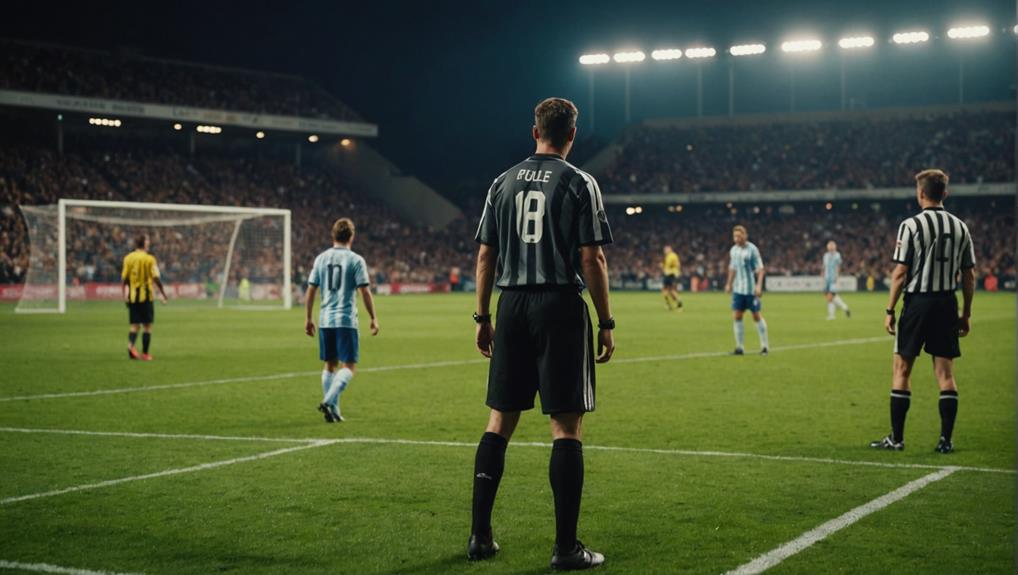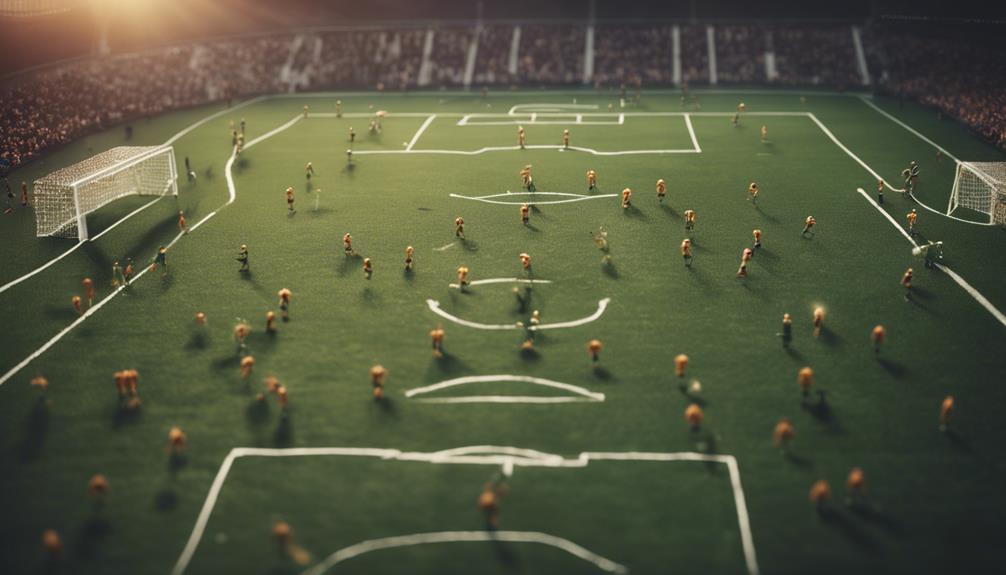
Understanding Key Soccer Regulations
August 19, 2024To understand key soccer regulations, remember that teams play with 11 players, aiming to score goals. The game begins with a coin toss, and offside violations prevent cheating. Field dimensions are vital, influencing strategy and tactics. Teams must follow guidelines, like having at least seven players to start. Fouls lead to penalties, with yellow and red cards indicating severity. Formations like 4-4-2 or 4-3-3 shape gameplay styles. Knowing these regulations enhances your soccer experience and appreciation of the game's dynamics.
Gameplay Regulations
Understanding the gameplay regulations in soccer is crucial for players and fans alike to fully grasp the dynamics of the sport. Each team fields 11 players, including one goalkeeper tasked with defending the goal.
The game starts with a coin toss to decide which team kicks off. The primary goal is to score goals by getting the ball into the opposing team's net. Players can attempt to score from any position on the field, but they must follow rules like offside violations, which prevent unfair advantages.
In situations like free kicks, corners, and penalties, specific regulations come into play to guarantee fair gameplay. For example, a player taking a penalty kick must adhere to the rules, and if successful, the goal counts towards their team's score. Understanding these regulations enhances the enjoyment and comprehension of soccer matches for both players and spectators.
Field Dimension Rules
Field dimension rules dictate specific measurements and markings that define the boundaries and layout of a regulation soccer field.
A standard soccer field ranges from 100 to 130 yards in length and 50 to 100 yards in width, with international dimensions typically falling between 110-120 yards long and 70-80 yards wide.
The field is structured with important markings like boundary lines, a center circle, penalty areas, goal areas, and goal lines. These dimensions are essential for referees to make accurate calls during gameplay.
The size of the soccer field greatly influences the strategy and gameplay of teams. Teams must adapt their tactics based on the dimensions of the field, utilizing the space effectively to create scoring opportunities or defend against attacks.
Understanding and adhering to field dimension rules is fundamental for players and coaches to optimize their performance on the pitch.
Team and Player Guidelines

Teams in soccer consist of 11 players, with one player designated as the goalkeeper per team. To start or continue a match, a minimum of seven players from each team must be present.
Before the game, all players and substitutes must be listed on the team sheet. It's mandatory for each team to have one player assigned as the goalkeeper during play.
In competition play, teams are allowed a maximum of five substitutions. This flexibility in substitutions enables coaches to adjust tactics and player fatigue during the game.
Ensuring the team composition meets the guidelines is essential for fair play and maintaining the integrity of the match. Remember, adhering to player guidelines and the maximum number of substitutions can have a significant impact on the flow and outcome of the game.
Make sure to follow these regulations to avoid penalties and uphold the spirit of the sport.
Fouls and Penalties
Committing fouls in soccer can result in various penalties, affecting the flow and outcome of the game. Common fouls such as handballs, tripping, and other forms of misconduct can lead to consequences like free kicks, penalty kicks, yellow cards, or even red cards.
When a foul occurs inside the penalty area, the fouled team is awarded a penalty kick, giving them a direct opportunity to score. Referees have the authority to determine whether a foul warrants a direct or indirect free kick, depending on its severity.
Yellow cards are issued as warnings for misconduct, while red cards lead to the player's ejection with no substitution allowed. Understanding the rules surrounding fouls and penalties is vital for players and fans alike, as it influences the dynamics of the game and can have a significant impact on the final result.
Formations and Strategies

How do soccer teams strategically align their players on the field to optimize performance and achieve tactical objectives?
Soccer formations play a pivotal role in shaping a team's style of play and overall strategy. Common formations like the 4-4-2, 4-3-3, and 3-5-2 offer different structures to suit various tactical approaches.
- The 4-4-2 formation provides balance with four defenders, four midfielders, and two forwards, allowing for a solid defensive foundation while maintaining attacking options.
- In contrast, the 4-3-3 formation focuses on an offensive approach by deploying four defenders, three midfielders, and three forwards, aiming to overwhelm the opposition with an extra attacking player.
Choosing the right formation depends on factors like player strengths, opponent analysis, and specific tactical objectives for the match.
Ultimately, the chosen formation should align with the team's overall strategy to optimize performance on the field.
Conclusion
Now that you've got the lowdown on soccer regulations, you're ready to hit the pitch with confidence.
Remember, the rules are like the notes in a symphony – each one playing an essential role in the beautiful game.
So go out there, play your heart out, and let the game flow like a well-choreographed dance.
Go score that winning goal and make your mark on the field!


